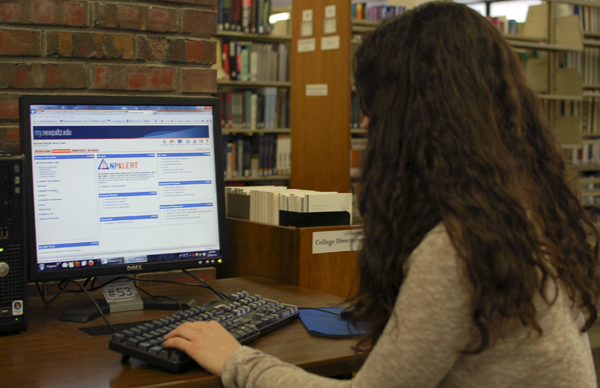

The response rate for the digital Student Evaluation of Instruction (SEI) — introduced last semester — was higher than expected, according to college officials.
Associate Professor of Communication & Media Janice Anderson said the overall student response rate for the online SEIs was 71 percent, which exceeded the Academic Affairs Committee expectations.
“Our research prior to implementation indicated response rates might be much lower,” Anderson said. “On the Academic Affairs Committee, we considered that rate to be highly successful because the old response rate, according to Institutional Research, was only about 80 percent.”
The School of Fine & Performing Arts had the highest response rate with 72 percent, according to Assistant Vice President of Institutional Research & Planning Jacqueline Andrews. She said the School of Business, School of Education and School of Liberal Arts and Sciences had a 71 percent response rate while the School of Science and Engineering held a 70 percent response rate.
According to Andrews, there was no difference between response rates for courses with full-time versus part-time professors and no difference in response rates for general education (GE) versus non-GE courses.
SEIs lasted from Wednesday, Oct. 12 to Tuesday, Dec. 13. The average completion time was 2.34 minutes, according to newpaltz.edu.
“5,830 students responded to at least one SEI,” Andrews said. “A total of 7,972 students were eligible to respond to the SEIs.”
Anderson said our generation of students is well-acclimated to online surveys and formats, so it was not as much of a problem convincing students to evaluate the classes.
The Institutional Research and Computer Services posted constant reminders when students logged onto my.newpaltz.edu. Anderson said faculty statements such as, “Your feedback really matters to me,” assisted in achieving a higher response rate.
Anderson said digital SEIs save money such as printing and posting costs. They are also less time consuming and provide faculty with more expedited feedback.
“More timely feedback allowed me to change things that needed to be changed and continue new practices that I and the students thought worked well,” Anderson said. “This timeliness was very helpful from my viewpoint. I also liked that I could add questions to adapt the online form to issues specific to the classes that I teach.”
Anderson said this feedback could build an assessment form adapted to classes and concerns. When it comes to the specific wording of the 12 common questions, they are continuing to hear suggestions for improvements.
All results of the SEIs from past semesters can be viewed at newpaltz.edu/oir/sei.html.
